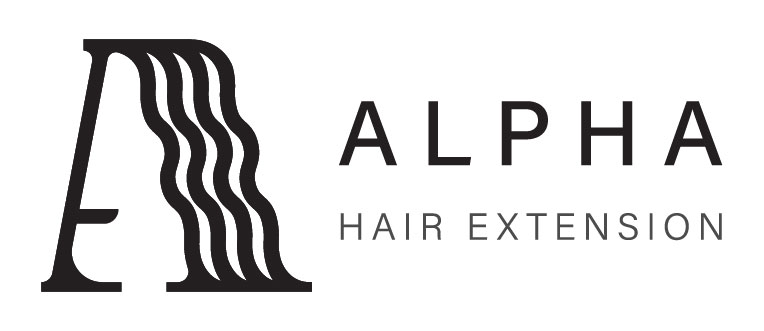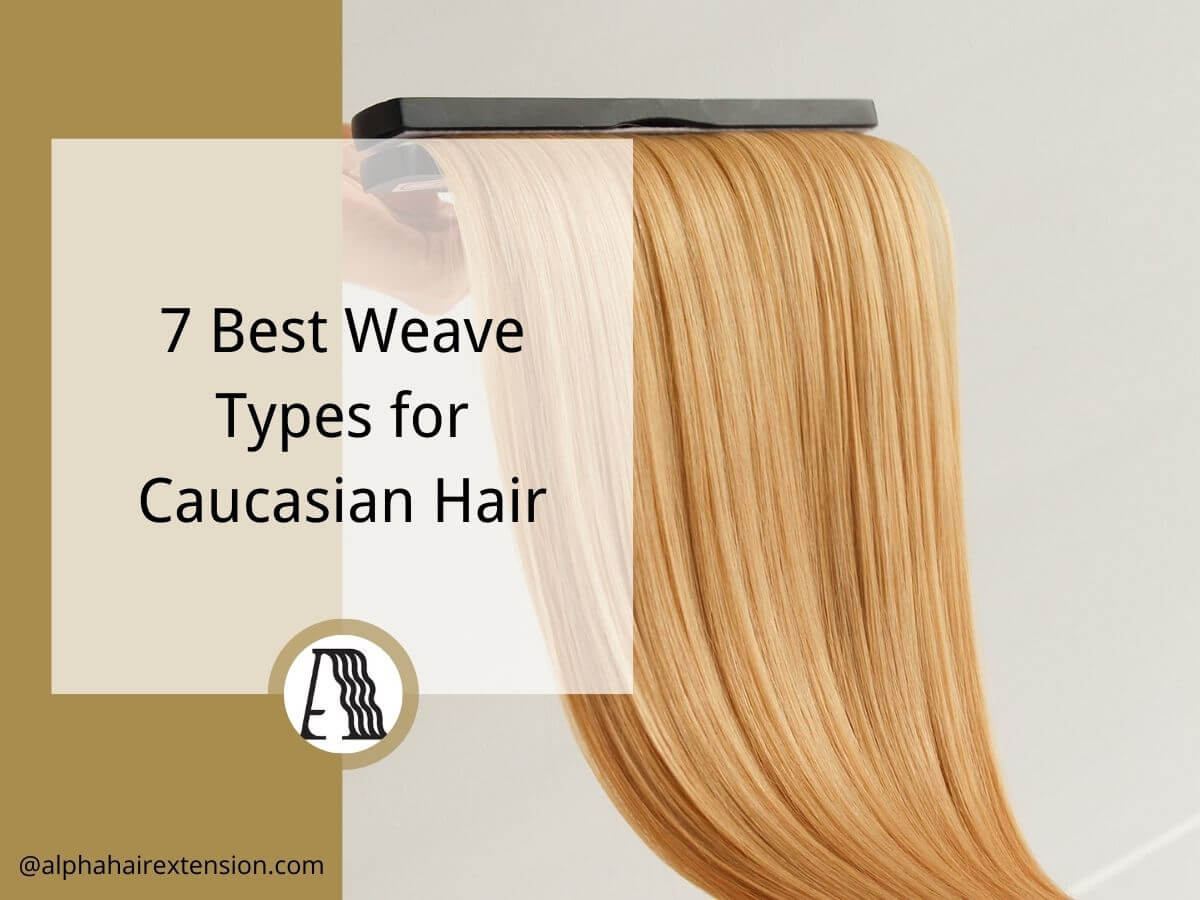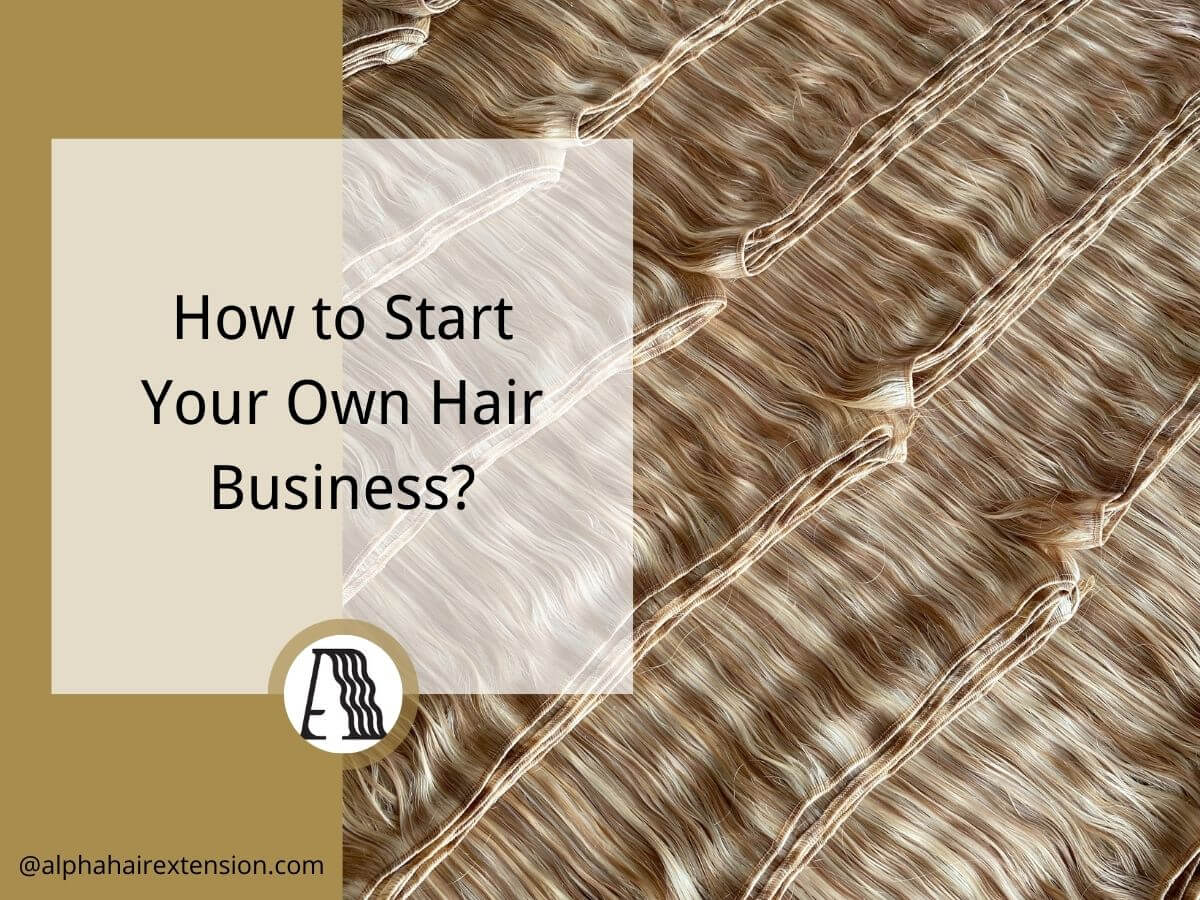When choosing extensions for your brand or salon, the details matter. The difference between Flex Weft and Volume Weft isn’t just about appearance—it affects everything from how the hair feels to how long it lasts and how easy it is to install.
I learned this the hard way. Early on, I stocked what looked great, assuming all extensions worked the same. But soon, customers came back with mixed feedback—some loving them, others struggling with weight, comfort, or longevity.
That’s when I realized that small differences in construction and application could completely change the experience.
If you’re trying to decide between Flex Weft and Volume Weft, you’re already ahead of where I started.
In this guide, I’ll break down the key differences in construction, thickness, application, durability, and maintenance so you can confidently choose the best option for your business and clients.
So let’s get started!
1. What is Flex Weft?
I’ve seen it happen too many times—clients love the idea of extensions but end up frustrated when they feel heavy, stiff, or uncomfortable. That’s where Flex Weft makes a difference. It’s designed to be lightweight, flexible, and seamless, making it one of the most comfortable extension options available.
Unlike thicker wefts, Flex Weft has a thin, bendable seam that lays flat against the scalp, blending effortlessly with natural hair. It moves with the hair instead of sitting on top of it, which makes styling easier and the overall feel much more natural. For clients with fine to medium hair, this can be a game-changer.
Key Features
What makes Flex Weft different? Here’s why salons and brands often choose it:
- Thin, flexible seam – Lays flat against the scalp for a seamless blend.
- Lightweight feel – Less bulk, less tension, and more comfort.
- Easy to blend – Works well with fine to medium hair, creating a natural look.
- Versatile styling – Whether worn down, in an updo, or a high ponytail, it moves naturally.
If your clients want extensions that feel like their own hair, this could be the best option for your business.
Pros & Cons
Pros
- Comfortable for long wear – The lightweight design reduces strain on the scalp.
- Moves naturally – The flexible seam allows the hair to shift effortlessly.
- Less tension on natural hair – A great option for those who want to minimize stress on their strands.
- Suitable for layering – Can be stacked for added volume without creating bulk.
Cons
- Less volume per row – Clients wanting a fuller look may need more wefts.
- Not as durable as thicker wefts – The thinner stitching may wear out faster.
- Can shift more easily – May require more frequent maintenance.
If your goal is to offer lightweight, natural-feeling extensions, Flex Weft is a strong choice. But if your customers prioritize maximum volume with fewer rows, they may need a different option or additional layering.
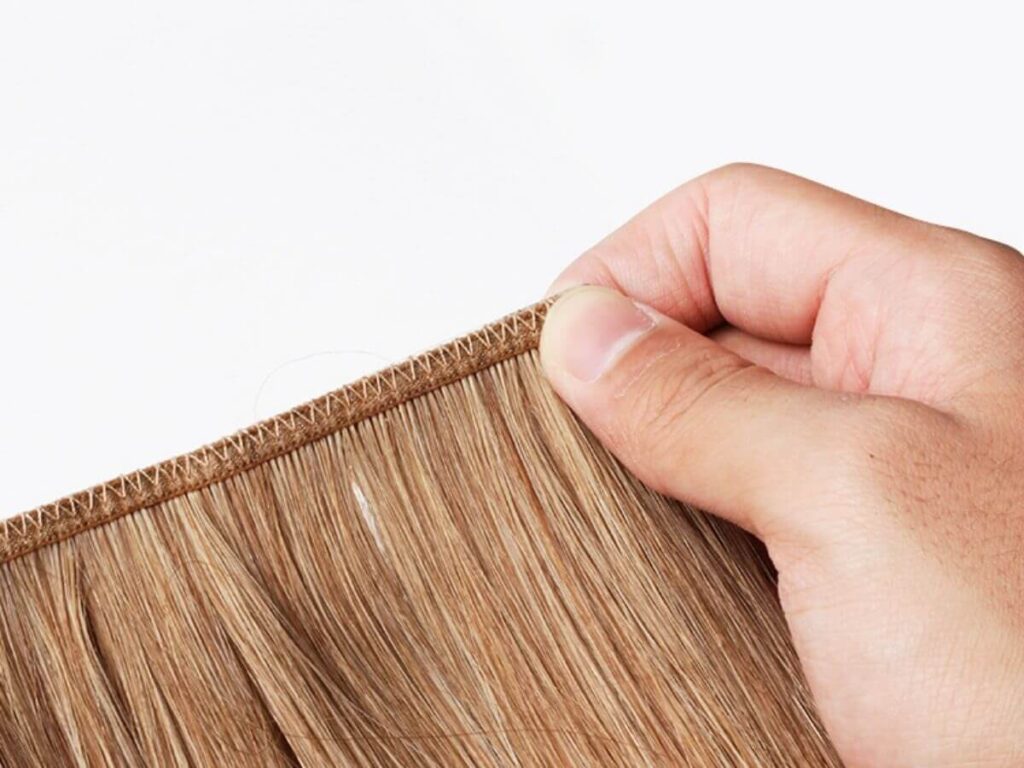
2. What is Volume Weft?
A Volume Weft is a thicker, more durable hair extension designed to add fullness and density. It is ideal for those who want maximum volume without having to layer multiple wefts. Compared to thinner wefts, this type offers a stronger structure and longer lifespan.
Because of its density, it works well for medium to thick hair types. It provides instant fullness without looking unnatural. However, it can feel heavier than other wefts, making it better suited for those comfortable with added weight.
Key Features of Volume Weft
Volume Wefts stand out because of their thick and structured design. Here’s what makes them different:
- Thicker seam – Contains multiple layers of hair for extra fullness.
- More durable stitching – Reinforced to prevent shedding and fraying.
- Great for thick hair – Provides density without looking unnatural.
- Fewer wefts needed – A single row delivers more volume than thinner options.
Pros & Cons of Volume Weft
Pros
- Adds significant volume without requiring multiple wefts.
- Durable construction allows for long-term use.
- Works well for thicker hair types, blending naturally.
- Holds styles longer, making it ideal for curled or textured looks.
Cons
- Heavier than thinner wefts, which may feel uncomfortable over time.
- It can be bulkier at the roots, making it harder to style in high ponytails.
- Not ideal for fine hair, as it may feel too dense.
- Requires stronger attachment methods to keep it secure.
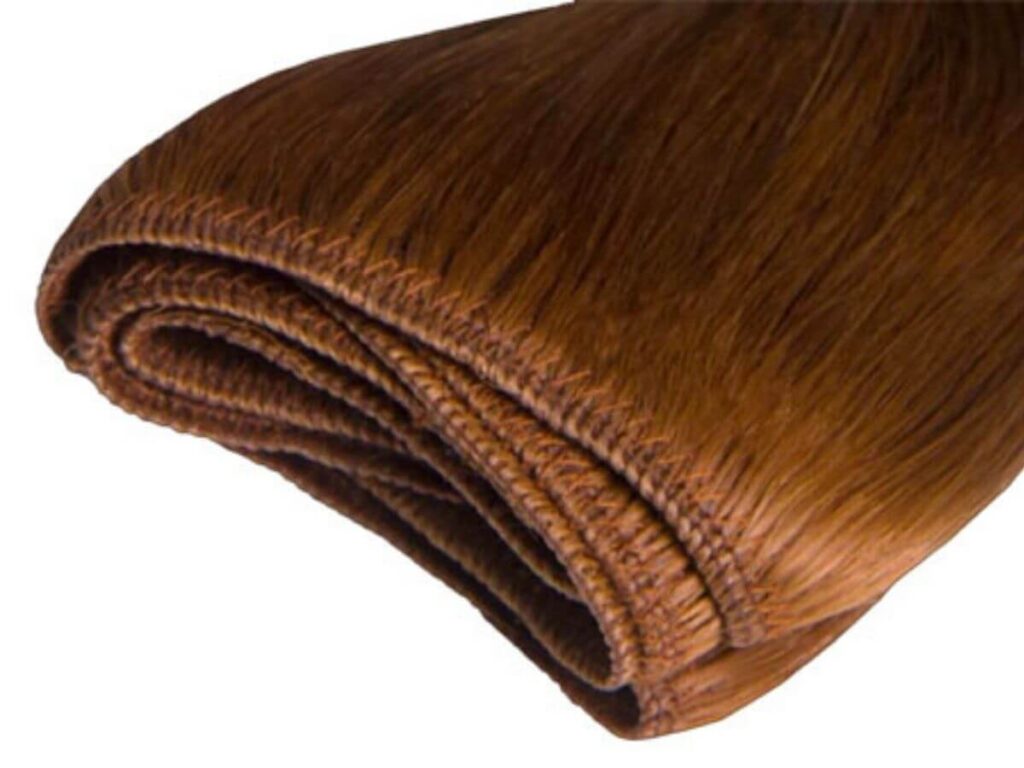
3. Hand Tied vs Volume Weft: Key difference
Choosing the right weft depends on hair type, styling needs, and comfort preferences. Flex Weft and Volume Weft have distinct differences in construction, thickness, installation, and durability. Below is a comparison to help you decide which one suits your brand and clients.
| Feature | Flex Weft | Volume Weft |
| Construction & Material | Made with a thin, seamless design. | Made with thicker, layered stitching for added fullness. |
| Very flexible and lays flat for a natural look. | Designed to provide more density and structure. | |
| Thickness & Weight | Thinner and lightweight, making it comfortable for everyday wear. | Thicker and slightly heavier, ideal for those wanting dramatic volume. |
| Moves naturally with the hair. | Feels denser and may require a stronger attachment method. | |
| Application & Installation | Can be sewn in, taped in, or attached with microbeads. | Typically installed using beaded weft or sew-in techniques. |
| Easier to layer for a blended look. | Requires fewer rows but has more hair per weft. | |
| Works well for thin to medium hair. | Best for thicker hair or clients who want maximum volume. | |
| Durability & Lifespan | Lighter weight means less stress on natural hair. | Thicker stitching makes it more durable. |
| Can last 6-12 months with proper care. | Can last 12+ months, but may require more maintenance over time. |
4. Factors to Consider When Choosing a Flex Weft or Volume Weft
Choosing between Flex Weft and Volume Weft isn’t just about looks—it’s about how the extensions feel, move, and hold up over time. Whether you’re selecting products for your brand or helping clients find their perfect match, understanding the weight, texture, and comfort level of each option is key.
Fine or Coarse Hair
The right weft depends on your client’s hair texture. If they have fine hair, a Flex Weft is the better choice. Its lightweight design blends easily and won’t strain delicate strands. On the other hand, if they have coarse hair, a Volume Weft provides the fullness they need without requiring multiple layers. It holds up well with thick hair and frequent styling, making it the stronger option for long-term wear.
Length and Volume
If the goal is to add length, a Flex Weft blends smoothly with natural hair and moves effortlessly. It creates a lightweight, natural appearance that your clients will love. If they want maximum volume, a Volume Weft is the way to go. It instantly makes the hair look fuller without requiring multiple rows of extensions. The extra density creates a more dramatic effect, perfect for those who want thicker, fuller hair.
Comfort & Daily Wear
For clients who wear extensions daily, comfort is key. A Flex Weft feels light and flexible, allowing for natural movement without scalp strain. It’s an excellent choice for those who want to wear extensions long-term. A Volume Weft, while offering a fuller look, has more weight. Some clients may find it less comfortable for all-day wear, but those who want maximum volume will be willing to adjust.
Conclusion
You’ve done the hard part—researching, learning, and understanding what your customers need. Now, it’s time to take action.
The right extensions boost confidence, create transformations, and keep customers coming back. A Flex Weft gives seamless comfort, while a Volume Weft delivers bold fullness. Both can be powerful when used the right way.
What will set your brand apart?
The best businesses don’t wait—they act. Be the one that gives clients exactly what they need.
Contact us today to get started.
Explore More Helpful Resources
Not quite what you’re looking for? Explore our wider product range for more choices:
Still haven’t found what you’re looking for? Don’t hesitate to contact us. We’re available around the clock to assist you.
